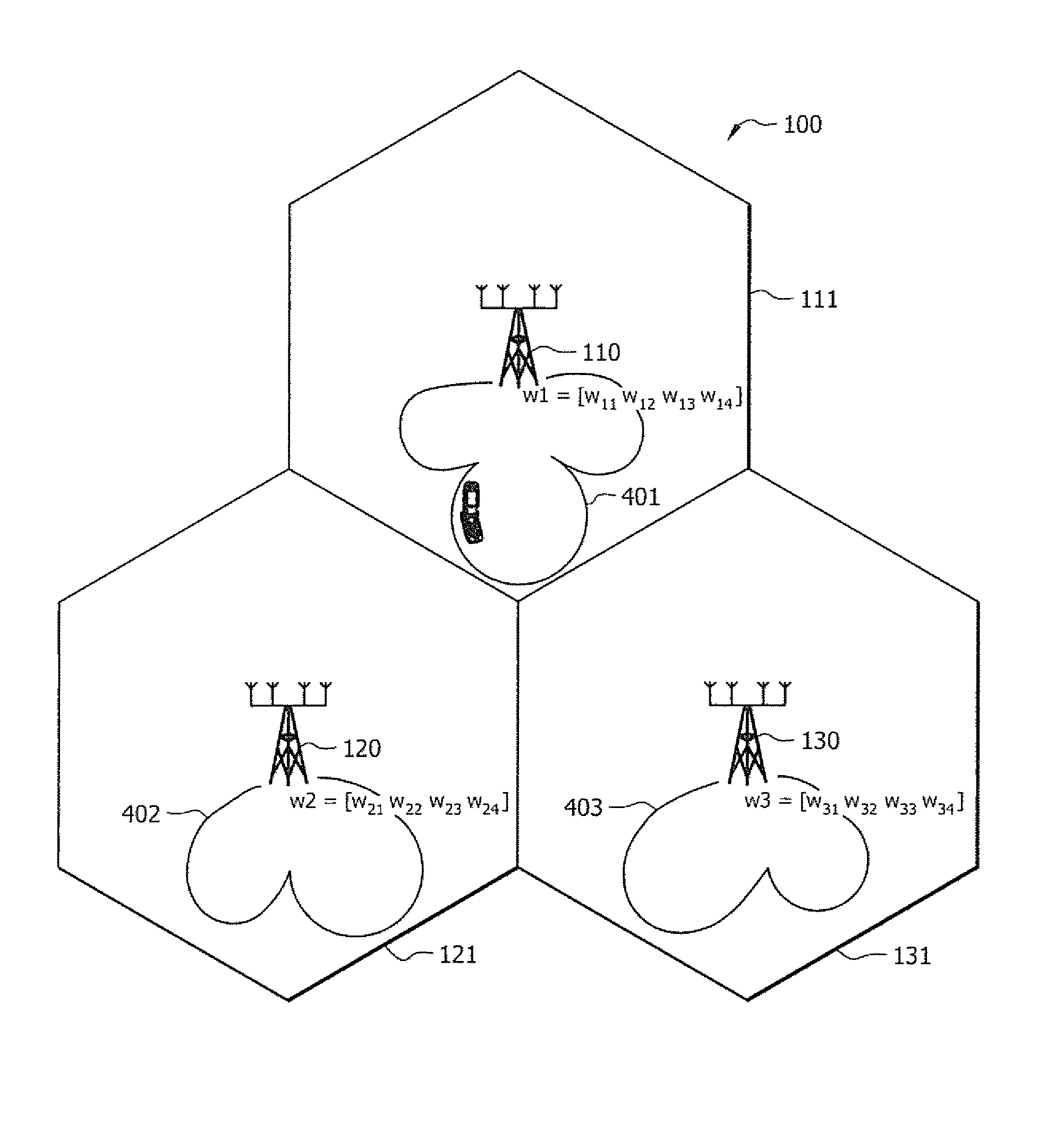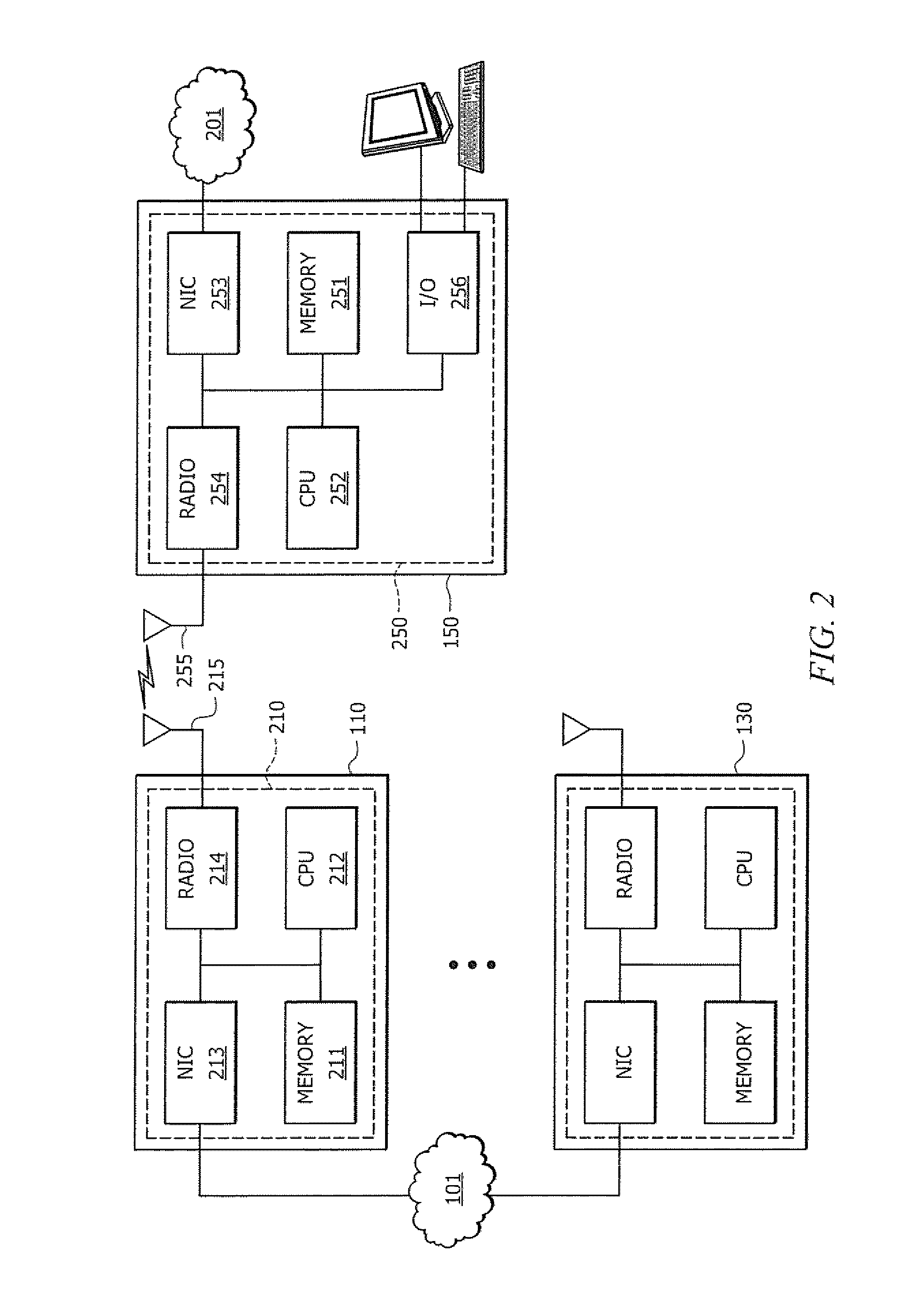Reducing multi-cell interference using cooperative random beam forming
a beam forming and multi-cell technology, applied in diversity/multi-antenna systems, substation equipment, site diversity, etc., can solve problems such as unacceptably high outage rates, mutual interference, and inter-base station interference, and achieve high spectral efficiency, reduce communication outages, and aggressive frequency reuse
- Summary
- Abstract
- Description
- Claims
- Application Information
AI Technical Summary
Benefits of technology
Problems solved by technology
Method used
Image
Examples
Embodiment Construction
[0019]Directing attention to FIG. 1, communication system 100 adapted according to an embodiment of the present invention is shown. In the illustrated embodiment, communication system 100 includes a plurality of base stations, shown as base stations 110-130, each having a service area associated therewith, shown as cells 111-131 respectively. Subscriber station 150 is disposed within service area 111 of base station 110. Base stations 110-130 of communication system 100 may operate to provide a local area network (LAN), metropolitan area network (MAN), or wide area network (WAN).
[0020]It should be appreciated that communication system 100 of embodiments may include numbers of base stations and / or subscriber stations different than that shown. For example, communication system 100 may comprise a plurality of subscriber stations disposed throughout service areas 111-131. Communication between such subscriber stations and base stations 110-130 may be provided using a number of multiple...
PUM
 Login to View More
Login to View More Abstract
Description
Claims
Application Information
 Login to View More
Login to View More - R&D
- Intellectual Property
- Life Sciences
- Materials
- Tech Scout
- Unparalleled Data Quality
- Higher Quality Content
- 60% Fewer Hallucinations
Browse by: Latest US Patents, China's latest patents, Technical Efficacy Thesaurus, Application Domain, Technology Topic, Popular Technical Reports.
© 2025 PatSnap. All rights reserved.Legal|Privacy policy|Modern Slavery Act Transparency Statement|Sitemap|About US| Contact US: help@patsnap.com



